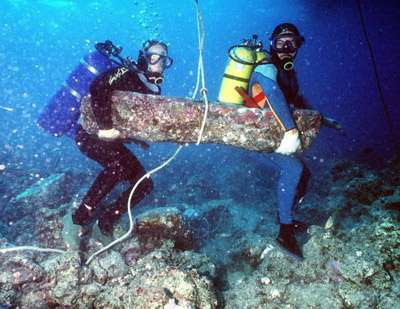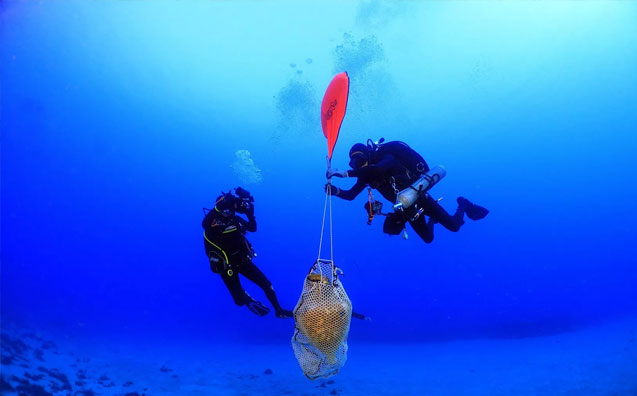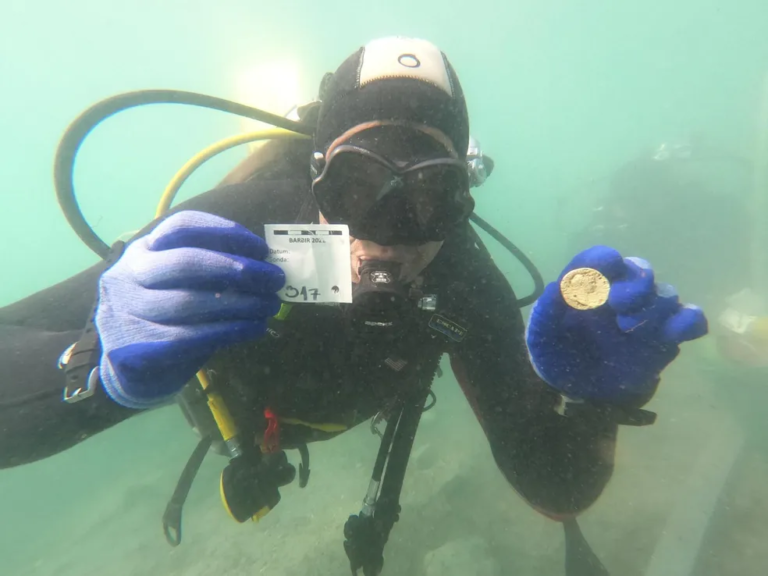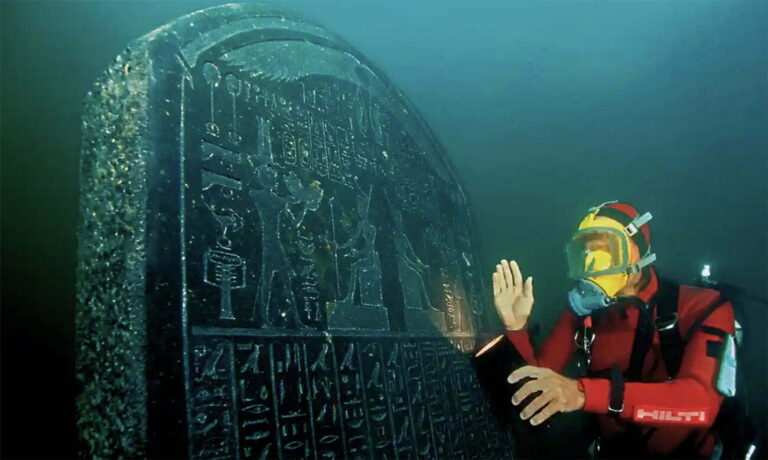Recreational Diving and Archaeology: Hidden Treasures in the Depths
Recreational diving has become increasingly popular among adventure enthusiasts, offering a unique opportunity to explore the wonders that lie beneath the ocean surface. Among the many fascinating aspects of diving, the exploration of underwater archaeological sites and the potential for uncovering hidden treasures are particularly captivating. Just imagine the thrill of diving into the depths and stumbling upon ancient relics that have been preserved for centuries. It is this allure of mystery and historical significance that draws divers to embark on underwater archaeological adventures.
Table of Contents
Historical Background of Underwater Archaeology
Underwater archaeology has emerged as a captivating field of study, unveiling the secrets and hidden treasures that lie beneath the depths of our oceans and rivers. The origins of this discipline can be traced back to the mid-20th century when explorers and researchers became interested in exploring submerged structures and artifacts. The advent of scuba diving and advancements in technology made it possible for human beings to delve into the underwater world, which was previously inaccessible.
As underwater archaeology began to gain recognition, significant discoveries were made that shed light on our ancient past. One such remarkable find was the ancient city of Alexandria, submerged in the Mediterranean Sea. Excavations in this underwater metropolis unveiled stunning statues, temples, and structures that had been lost to history. These discoveries captured the imagination of the world and ignited interest in underwater archaeology.
With each passing year, underwater archaeologists continue to make ground-breaking discoveries. Secrets that lay hidden for centuries are being unearthed, providing us with valuable insights into the history of our civilization. From shipwrecks laden with precious artifacts, to submerged cities holding clues to lost civilizations, the treasures found underwater are like time capsules waiting to be opened.
Techniques and Tools Used in Underwater Archaeology
Underwater archaeology is a fascinating field that requires specific techniques and tools to successfully locate and excavate archaeological sites hidden beneath the depths. Various methods have been developed to ensure the preservation of these valuable historical treasures.
One of the main techniques employed by underwater archaeologists is remote sensing. This involves the use of specialized equipment, such as side-scan sonar, which emits sound waves and creates detailed images of the seafloor. These images help archaeologists identify potential underwater sites and determine the best areas to explore further.
Divers also utilize various excavation techniques to carefully uncover artifacts and structures. One common method is underwater excavation, which involves carefully removing sediment and debris from the site. Specialized tools, such as water dredges and suction pumps, facilitate this process without causing damage to delicate artifacts.
When it comes to locating artifacts and relics, metal detectors are invaluable tools. These devices can detect metal objects buried beneath layers of sediment, giving archaeologists an idea of where to focus their excavation efforts. Additionally, photogrammetry is commonly used to create 3D models of archaeological sites. This technique involves capturing a series of photographs and using specialized software to stitch them together, creating a detailed visual representation of the site.
Advancements in technology have also played a crucial role in underwater archaeology. Sophisticated remotely operated vehicles (ROVs) and autonomous underwater vehicles (AUVs) equipped with high-definition cameras and robotic arms allow archaeologists to explore and record sites at great depths without the need for human presence. These tools offer a unique opportunity to document and study archaeological sites that would otherwise be inaccessible.
Overall, the techniques and tools used in underwater archaeology are constantly evolving as new advancements are made. With a combination of remote sensing, excavation techniques, metal detectors, photogrammetry, and advanced technology, underwater archaeologists are able to uncover hidden treasures and piece together the mysteries of our past.
Challenges of Underwater Archaeology
Underwater archaeology presents a multitude of unique challenges that archaeologists must overcome to uncover the hidden treasures beneath the depths. One of the primary challenges faced by underwater archaeologists is poor visibility due to the murky waters. Limited visibility can make it difficult to locate and accurately document archaeological sites. Archaeologists must rely on their expertise and experience to navigate and explore these sites with precision.
Additionally, water pressure poses another significant challenge in underwater archaeology. As divers descend to greater depths, the pressure exerted by the water increases, affecting their ability to move and perform tasks effectively. This can make excavating and recovering delicate artifacts a delicate and time-consuming process. The use of specialized equipment designed to withstand high water pressure is crucial in conducting successful underwater archaeological expeditions.
Preservation difficulties are also a major concern for underwater archaeologists. The underwater environment can be harsh and unforgiving, leading to the deterioration and destruction of historical artifacts. Saltwater, for example, is highly corrosive and can cause irreversible damage to delicate objects over time. Archaeologists must carefully plan and execute preservation strategies to ensure the longevity of these precious artifacts.
Overcoming these challenges requires collaboration between various stakeholders, including divers, archaeologists, and environmentalists. Divers play a critical role in assisting archaeologists in their underwater expeditions, providing essential support and expertise. Archaeologists and divers must work together to develop innovative techniques and strategies to address the specific challenges they encounter.
Collaboration with environmentalists is also essential to preserve underwater archaeological sites and their surrounding ecosystems. Environmentalists can provide valuable insights and expertise on sustainable practices that minimize the impact of archaeological expeditions on marine life and habitats. Together, these stakeholders can work towards minimizing the challenges faced in underwater archaeology and ensure the responsible exploration and preservation of these hidden treasures.
Recreational Diving and Responsible Exploration
Recreational diving has become an increasingly popular activity among adventure enthusiasts, offering a unique opportunity to explore the unseen depths of the ocean. One of the most fascinating aspects of recreational diving is the chance to come across underwater archaeological sites and uncover hidden treasures from the past. However, it is crucial for divers to understand their role in preserving these sites and to approach their exploration responsibly.
Emphasizing the role of recreational divers in the preservation of underwater archaeological sites is essential for ensuring the conservation of these historical treasures. Divers can contribute to the protection and maintenance of these sites by refraining from touching or removing any artifacts they come across. It is crucial to remember that by disturbing or removing artifacts, the historical context and potential knowledge about the site can be lost forever.
Adherence to responsible diving practices and ethical guidelines is another important aspect of recreational diving and responsible exploration. Divers should always respect the underwater environment and its inhabitants by avoiding behaviors that may cause harm or disturbance. This can include keeping a safe distance from fragile corals or underwater structures, properly disposing of trash, and avoiding excessive noise that can disrupt marine life.
Responsible exploration also entails acquiring the necessary certifications and training to ensure one’s own safety and the safety of the underwater archaeological sites. Engaging in ongoing education and training can help divers develop the skills and knowledge necessary to navigate these unique environments and understand the importance of preserving them.
In conclusion, recreational diving is an exciting way to explore the hidden treasures and mysteries that lie beneath the ocean’s surface. However, it is essential for divers to recognize their role in preserving underwater archaeological sites and embrace responsible diving practices. By doing so, we can ensure that these historical sites and their cultural significance are protected for future generations to appreciate and learn from.
Famous Underwater Archaeological Sites
Some of the most renowned underwater archaeological sites around the world offer a glimpse into the fascinating history hidden beneath the depths. These sites not only provide valuable insights into past civilizations but also serve as treasure troves of historical artifacts. Let’s explore some of these remarkable sites:
- Alexandria, Egypt: Situated on the Mediterranean coast, Alexandria is home to several underwater archaeological sites, including the famous Pharos Lighthouse. Built in the 3rd century BC, the Pharos Lighthouse was one of the Seven Wonders of the Ancient World. It was eventually destroyed by earthquakes, but remains of the structure can still be found underwater.
- Port Royal, Jamaica: Known as the “Sodom of the New World” due to its reputation for piracy and debauchery, Port Royal was once a bustling city in the 17th century. However, a devastating earthquake in 1692 caused the city to sink beneath the sea. Today, Port Royal is an underwater archaeological site that has yielded numerous treasures, including artifacts from pirate ships and evidence of daily life during that time.
- Yonaguni Monument, Japan: Located off the coast of Yonaguni Island, this underwater structure has sparked intrigue and debate among archaeologists. Believed to be an ancient submerged city or temple, the Yonaguni Monument features megalithic stone formations that resemble terraces, steps, and columns. The origins of this enigmatic site remain a subject of ongoing research and speculation.
- Mohenjo-daro, Pakistan: Dating back over 4,500 years, Mohenjo-daro was one of the world’s earliest major urban settlements. Situated in the Indus Valley, this UNESCO World Heritage Site was abandoned and eventually lost to history. However, it was rediscovered in the 1920s, and underwater archaeological excavations have revealed fascinating artifacts and insights into the Indus Valley Civilization.
These sites represent just a small sample of the many underwater archaeological wonders found across the globe. Each holds its own treasures and historical significance – from ancient cities and temples to shipwrecks and artifacts. Exploring these hidden gems allows us to connect with the past, revealing the ingenuity, artistry, and mysteries of civilizations long gone.
As we embark on the adventure of recreational diving, it is crucial to remember the importance of responsible exploration and support for archaeological organizations. By adhering to ethical guidelines and preserving these underwater treasures, we can ensure that future generations will have the opportunity to experience the wonder and fascination of these extraordinary sites.
Conclusion
Recreational diving is a thrilling and popular activity among adventure enthusiasts. The underwater world holds a special fascination, particularly when it comes to exploring archaeological sites and uncovering hidden treasures. Underwater archaeology has emerged as a field of study, tracing its roots back to pioneers who recognized the rich history beneath the waves.
Through the use of various techniques and tools, underwater archaeologists have made significant discoveries. They employ specialized equipment and technology to locate and excavate submerged sites, shedding light on the mysteries of the past. However, they face unique challenges such as poor visibility, water pressure, and preservation difficulties.
Collaboration between divers, archaeologists, and environmentalists is crucial to overcoming these challenges. By working together, they can ensure the preservation of underwater archaeological sites for future generations. Recreational divers play a vital role in this endeavor. By practicing responsible diving and adhering to ethical guidelines, they contribute to the protection of these hidden treasures.
Various underwater archaeological sites around the world have gained fame for their historical significance and the treasures they hold. From ancient shipwrecks to submerged cities, these sites offer a glimpse into our past. Exploring them not only satisfies our curiosity but also deepens our understanding of history.
In conclusion, recreational diving and underwater archaeology are interconnected, offering great allure for adventure seekers. It is an invitation to explore the hidden treasures and mysteries that lie beneath the surface. By engaging in responsible diving practices and supporting archaeological organizations, readers can contribute to the preservation and exploration of these remarkable underwater sites. There is a whole world waiting to be discovered, and it’s up to us to ensure its continued existence for future generations.







